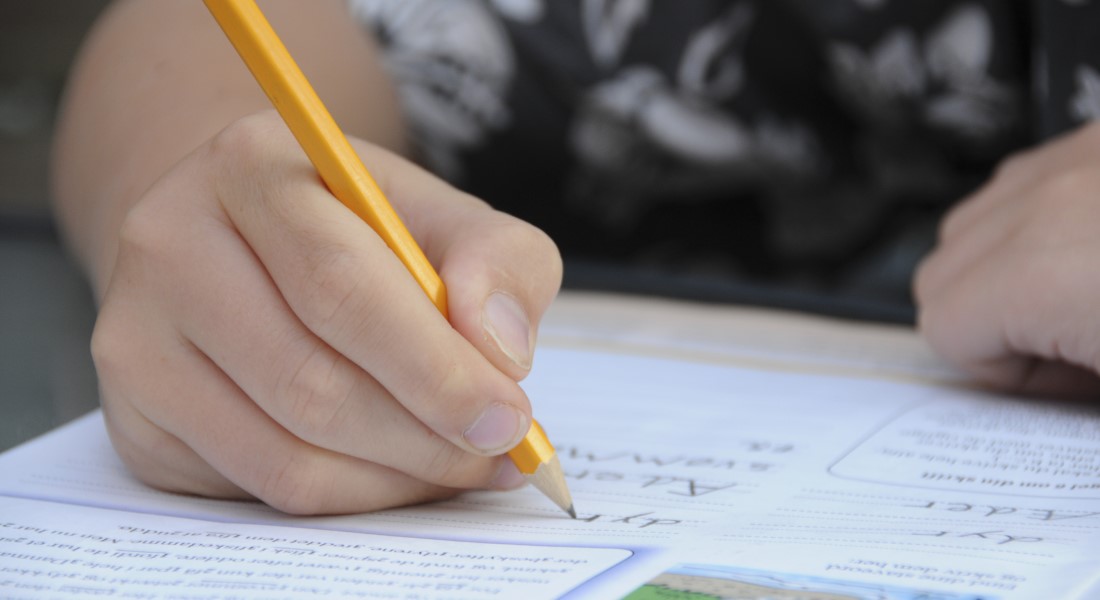Schools managed to prevent increased learning gaps during the corona crisis
School closures during the corona crisis had little impact on the reading proficiency of Danish pupils, even when you factor social background into the equation, new analyses conducted by researchers at Department of Sociology conclude.

When the Government closed all Danish schools during the COVID-19 pandemic in spring 2020, many feared that the sudden transition to online teaching and other forms of distance learning would severely affect the pupils’ academic performance.
But contrary to expectation, recently published results of the national tests conducted in spring 2021 show that only lower secondary pupils suffered a minor loss in performance. And this is counterbalanced by an even greater learning gain among pupils in the second and fourth grades.
Now new in-depth analyses of the national test scores reveal that when you look at reading proficiency school closures did not lead to increased social imbalance in the children’s academic performance.
On the contrary. There is evidence to suggest that fourth-grade pupils of parents with a low or average income generally did better during the closures than children of high-income parents (Figure 1).
Figure 1: Development in reading proficiency by parental income
The picture is complex, though. Whereas parental income had no definite influence on children’s performance in the sixth grade, the analyses point to a degree of social imbalance among children in the eighth grade.
In addition, there are indications that low-performing pupils suffered slightly more from school closures than their classmates, as did boys in the fourth and sixth grades.
But on a whole these are minor social differences if you ask Postdoc Jesper Fels Birkelund from the Department of Sociology, and they do not change the overall conclusion: That school closures during the corona crisis generally have not increased social learning gaps in primary school.
“Many feared that disadvantaged children would be the great losers of the pandemic when the schools closed down and the teaching suddenly had to take on new forms,” says Jesper Fels
Birkelund who conducted the analysis together with Associate Professor Kristian Karlson.
“But considering children’s reading skills, any negative impact has been minor, and the social gap in performance has not changed substantially. Especially the latter is surprising, as we expected children of less socioeconomically advantaged parents to have suffered more from the lack of a structured learning environment.“
Other subanalyses point to the same conclusion: For instance, the gap in academic performance does not appear to have increased across ethnic origins or parental education – both of which typically influence children’s national test scores.
Schools learned from closures
The statistical analyses cannot explain in full why Danish pupils – especially the youngest – have done so well during the closures, but in their working paper the two researchers discuss several possible explanations.
There is a lot to suggest that schools, teachers and parents together have managed to reduce the damage from school closures by exercising flexibility and adaptability.
One possible explanation why lower secondary pupils suffered a minor loss in performance may simply be that they received distance teaching for 22 weeks as opposed to the younger pupils’ eight weeks. However, figures from the national tests conducted on a random sample of schools in spring 2020 show that the negative consequences on learning were evident already after the first, shorter school closure.
According to the researchers, this and the limited effect of school closures suggest that a lot of schools and municipalities became better at organising the distance teaching and introducing measures targeted at academically disadvantaged pupils, e.g. study cafés. Pupils in the lower grades may also have benefited from more free space, smaller study groups and additional teacher resources when the older pupils worked from home.
“Additional analyses are required to fully answer this question. It is also important to stress that we have only studied one aspect of pupils’ academic performance and not considered their general well-being during the COVID-19 pandemic. Nevertheless, there is a lot to suggest that schools, teachers and parents together have managed to reduce the damage from school closures by exercising flexibility and adaptability,” Jesper Fels Birkelund concludes.
Contact
Postdoc Jesper Fels Birkelund
Email: jfb@soc.ku.dk
Phone: +45 35 33 06 24
Mobile: +45 29 27 00 60
Associate Professor Kristian Karlson
Email: kbk@soc.ku.dk
Phone: +45 35 32 15 88
